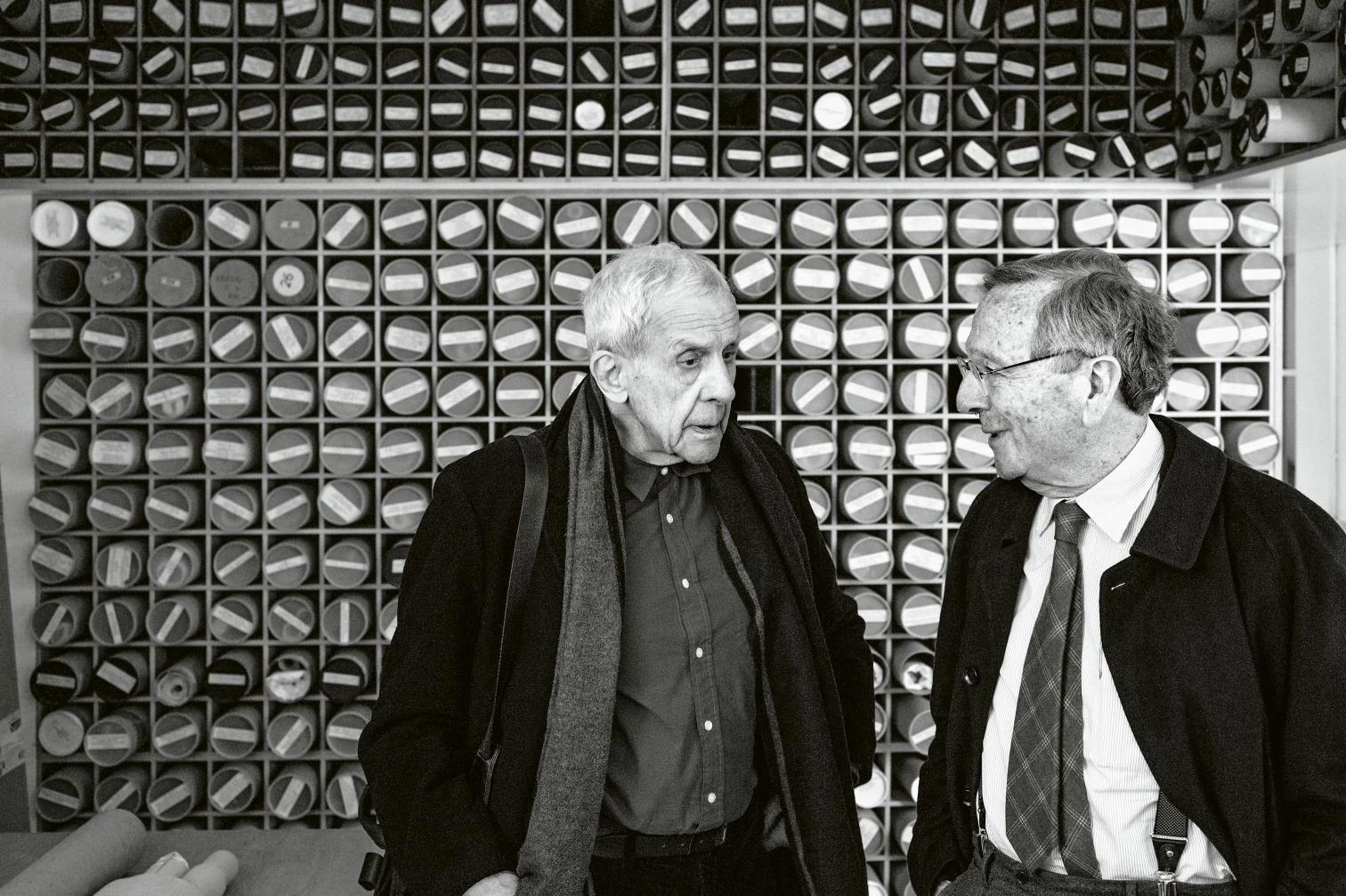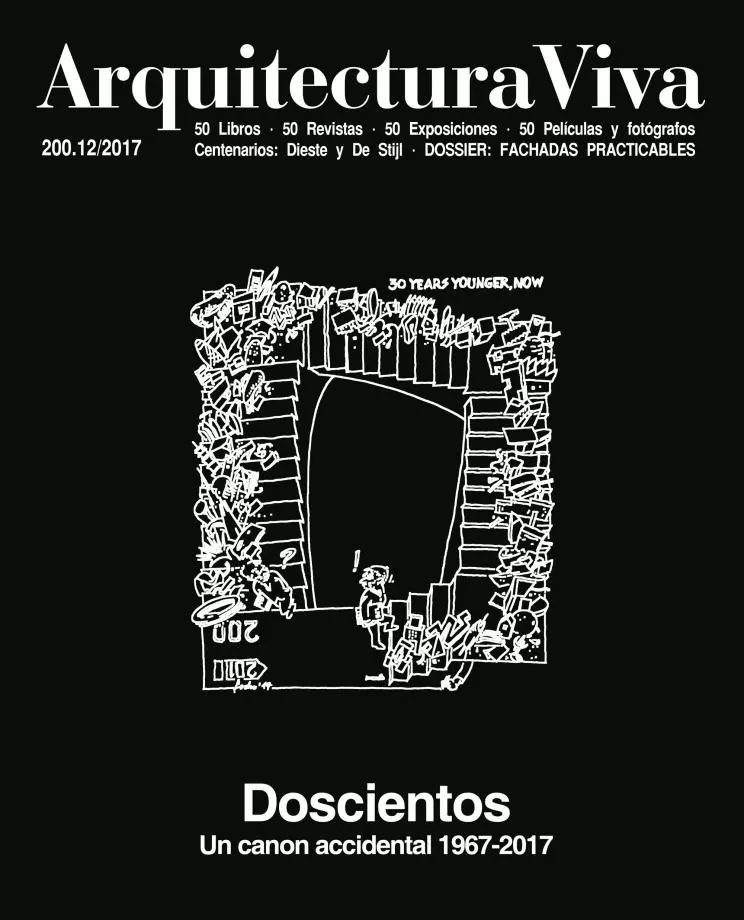After an encounter in Madrid, shortly before Rafael Moneo turned eighty, the Spanish architect and the historian and critic Kenneth Frampton had an epistolary conversation which we reproduce here.

Kenneth Frampton (KF): In the third edition of Modern Architecture: A Critical History I had the temerity to advance the thesis that at that time there were only three countries in Europe where one could recognize a collective culture of architecture, i.e., France, Spain, and Finland, and that in each instance they were societies in which there was a wide spectrum of talent simultaneously producing works of quality. As far as Spain is concerned, I thought that this was due to the following factors: the reconstructive energy released by the fall of the Franco regime; the exceptional status of architecture in Spain as a liberal profession vis-à-vis the colegio system, subsequently undermined by the European Union; and the survival of the city-state in Spain as an exceptionally cultivated and politically self-conscious patron compared, say, to the overall weakness of the provincial city in the United Kingdom. In the case of social-democratic Finland and France, the state had long since been involved as a patron; in the former since the end of World War II, and in the latter since the end of the 1960s, with the presidency of Georges Pompidou. Do you find that my overall perception in this regard has a validity either as a general principle or in its specific application to Spain?
Rafael Moneo (RM): I think you are right when you speak of “the reconstructive energy released by the fall of the Franco regime” and the “exceptional status of architecture in Spain as a liberal profession vis-à-vis the colegio system.” The third factor needs qualifying. Spain’s autonomous regions, city halls, and state ministries and institutions competed with each other during those years. Politicians tried to show that they chose architects ‘intelligently,’ whether with the help of advisers or through their own ability to discern competence in professionals. For sure all of this made architects go for interesting projects – whether strictly utilitarian (dwellings, schools, hospitals, public services, and infrastructures) or directly linked to policies of promoting cultural institutions (libraries, museums, or auditoriums) – and to the point of saturation, which in turn undoubtedly gave rise to sad and avoidable excesses. Hence the notable development of Spanish architecture from the second half of the 1980s up to the crisis.
KF: When one looks back over the careers of distinguished architects, one has the feeling that for inexplicable reasons some are more consistent than others. The two recent masters who come to mind in this regard are Louis Kahn and Jørn Utzon, Utzon being a figure with whom you were intimate when you worked on the Sydney Opera House. This is in contrast to Sáenz de Oíza, who was, I believe, an equally influential figure for you in that he was your teacher and you briefly assisted him in Torres Blancas, Madrid, which was and still is an important neo-Wrightian work. However, looking back over his career I feel that there are perhaps only two outstanding pieces: the Banco Bilbao in Madrid and the elegiac Oteiza Museum that he realized at the end of his life. How do you feel about this general observation?

RM: Utzon and Oíza were two very different characters. Oíza was exceptionally intelligent, with a huge capacity for work and a remarkable ability to work with his hands. Brilliant, a restless reader, a polemicist, an extraordinary critic, demanding with his work, he always had doubts about what he was doing, alert, as he was, to the opinions his works provoked. His eagerness to go for what he believed to be more advanced made it difficult for the more personal, the more his own, to come out. On the other hand he was afraid of others noticing his overwhelming intelligence – something he nevertheless could not hide. Without a doubt, Torres Blancas, Banco de Bilbao, and the Oteiza Museum represent Oíza at his best as an architect. Maybe we can add some elements of Aránzazu. I don’t think that the stylistic differences between them make Oíza’s work describable as inconsistent; his peculiar talent and capacity is present in all of them. Utzon, on the other hand, entertained no doubts about his work, which seemed to emanate from his person with admirable and singular naturalness. He never lost his cool, not even in more dramatic situations, as when work on the foundation of the Sydney Opera House began with the problem of how to build the shells still unresolved. He accepted the respect and admiration he inspired – his heroic stature.
KF: This brings me to my response to your work, over the years. As you are aware I was the first outsider to respond with enthusiasm to your Bankinter in Madrid, designed with Ramón Bescós, and I still feel very positive about the remarkably subtle and layered cultural complexity of this building; the inextricably woven references to Wright, Scandinavia, and the Viennese Jugendstil. For some reason I associate the delicately rhythmic order of this building with your recent project for a bâtiment d’angle in Berlin. In both instances I feel that you are dealing with the conjunction of history and memory in a discreet way, and integrating this into the topography of the situation. This is also true of the Roman Museum in Mérida, and in this regard your work has a particular consistency. Mérida may be seen as the fusion of the galleria and a warehouse, and this is then fed into the unique characteristics of the site…
RM: I never forget, Kenneth, that you were the first among foreign critics to acknowledge the unexpected virtues of Bankinter. You make use of the right references, although we could perhaps add Bankinter’s determination not to succumb to the ‘brutalism’ then common. Also underlying it, I think, is the impact that key books by Venturi and Rossi had on me, as well as my respect for the Paseo de la Castellana and everything existing around. Hence the Berlin project may not be so far removed from Bankinter. It is perhaps more abstract, more robust, but like Bankinter it gives absolute priority to how materials are used. As for Mérida, I saw it above all as an opportunity for the city to gain back its Romanness.






